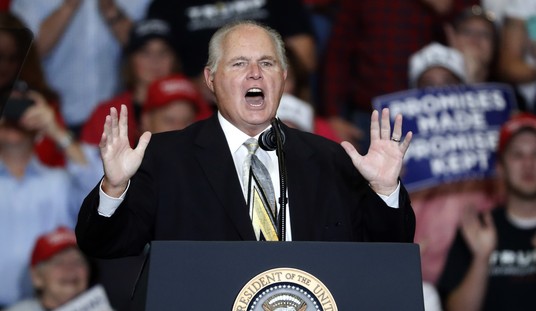As in government policy in general, there are major inflection points for civil space policy, starting with the initial one a little over half a century ago when, after Sputnik, it was determined that we would have a federal civil space program and NASA was formed. Three years later, in 1961, it was decided that NASA would land a man on the moon in a decade, and return him safely to earth.
After Apollo, a decision was made in 1972 that we would build a fleet of space shuttles which would supposedly make space travel routine. Despite the fact that they had not yet done so, a little over a decade later in 1984, President Reagan declared that we would build a space station in earth orbit, using the Shuttle for construction.
In 1986, when Challenger was lost with the first schoolteacher on board in full view of the nation, it was decided that it would no longer be official policy that the Shuttle would be the only space transportation system. In 1989, there was an aborted attempt at a new direction in space policy, in which the current (for a few days more) president’s father said that we would go back to the moon, and on to Mars, and settle the solar system. That idea was stillborn due to resistance from the space agency itself, which preferred to focus on its space station and Shuttle.
In 1993, when the space station was on the verge of being canceled, it was saved by only one vote in Congress, and then only because the Clinton administration converted it to a foreign-aid program for the Russians. This explains much of the quandary in which we remain today; in which we are dependent on them for a lifeboat to get us to the Space Station and for actual access to it after the Shuttle retires next year, if current policy follows through.
There were no more major changes, until a year after the loss of Columbia. Then, five years ago today and in the wake of that disaster, President George W. Bush announced that the nation was going to once again send humans beyond low earth orbit (LEO). In his words, humanity was going to go out into the cosmos.
This was in fact the biggest policy change in over three decades and since Apollo (ignoring his father’s aborted attempt in 1989), when all human ventures beyond LEO had been shut down. But this time, the president had a Congress of his own party and a sense of urgency arising from the Columbia disaster. The loss of the second Shuttle orbiter, with only three left in the aging and irreplaceable fleet, dictated a change in direction.
So the new plans — to retire the Shuttle by 2010 (a date dictated primarily by the completion of the space station, for which it was essential), and to replace it with a “Crew Exploration Vehicle,” which (while not really replacing it, not having the payload or return capability) would be able to go back to the moon, and (at least in theory) to “Mars and beyond,” became the new national space policy.
As part of the new policy, a commission was formed, led by industry veteran Edward Aldridge, former head of the Aerospace Corporation and undersecretary of defense. Less than a year after the announcement, it issued its report, which recommended that NASA implement a program that was (unlike Apollo) “affordable and sustainable,” and that it support national security goals and involve private enterprise and international partners. A little over a year after the announcement, in the spring of 2005, Dr. Michael Griffin, another industry veteran with multiple graduate degrees in engineering and management, was brought in to lead NASA in the new policy direction.
So, five years after the president’s announcement, how is it going?
I would have to say, not well.
The new administrator came into the agency with his own ideas about what a launch architecture for the new goals should look like. While there are claims that they analyzed all the alternatives being studied at the time, the agency has never provided any significant details of its trade studies that supposedly support the decision to go exactly in the direction that the administrator wanted to go before he arrived: an Apollo-like crew system named “Orion,” and a new launch vehicle named “Ares,” ostensibly derived from the Shuttle.
Even ignoring the fact that there are some fundamental design issues with the launch vehicle (such as its unfortunate tendency to shake itself and the crew apart during launch and potential to drift into the tower immediately after ignition), the problem arises in the fact that Dr. Griffin himself characterized it as “Apollo on Steroids” when he introduced it. Apollo had none of the characteristics recommended by the Aldridge Commission — it was neither affordable or sustainable, and it contributed in no way to private enterprise or international cooperation (with the exception of the last flight, the Apollo-Soyuz Test Project).
Its only contribution to national security was in winning the space race during the Cold War, but there is no manned space race today on which national security hinges. In addition, the technical and budgetary issues have caused the schedule to slip out to 2015 for its first flight, increasing the so-called “gap” between the end of the Shuttle and a new government means of getting American astronauts to space. As I’ve pointed out before, it is not what we need to become a spacefaring nation. But Dr. Griffin remains adamant that it is the right choice, defending it as recently as this past Friday, but still not satisfying the critics, including yours truly.
He has expressed interest in staying on as administrator in the new administration, but only if he can continue down the path that he has started. Apparently, despite a desperation petition drive and email campaign by his friends and family, while the administration has been willing to keep some key Bush appointees — most notably Defense Secretary Gates — it has no interest in retaining the NASA administrator. There is no evidence that it wants to retain his launch architecture either, though there has been no statement either way. Regardless, Friday is his last day at the agency, and no replacement has yet been announced, though there is speculation about candidates.
But Mike Griffin’s departure, and even the end of his vehicle designs, doesn’t necessarily mean the end of the Vision for Space Exploration. The two are not synonymous, though many supporters of the current plans would like people to think they are. The vision isn’t about any specific vehicle concept, or even any specific destination, even though many talk about it as the “Moon program,” or the “Mars program.” Regardless of implementation, it was never any more — or any less — than establishing a national goal, for the first time since Apollo, to once again send humans beyond low earth orbit. All else is simply details. There are many ways to do it, and perhaps the new administration and administrator will be more imaginative in doing it in an affordable way that permits much more activity, instead of redoing what we did forty years ago. The money currently being spent on redundant dedicated launch vehicles for the space agency could finally be invested in actual space exploration hardware, such as earth departure stages, lunar landers, and even propellant depots, and leave the earth-to-orbit task to private enterprise.
The money spent on the Ares program to date may have been money wasted, but ultimately, it likely would have been anyway. If we can get off a wrong path, it’s better that it is done sooner than later, even after five years. And more inclusive alternatives that finally harnesses private enterprise, and innovative infrastructure on orbit, could enable not just NASA astronauts to go to the moon, but finally the rest of us as well, which would be much more in keeping with the vision.









Join the conversation as a VIP Member